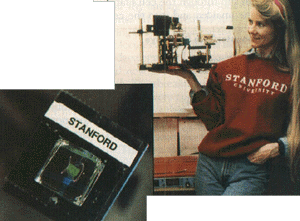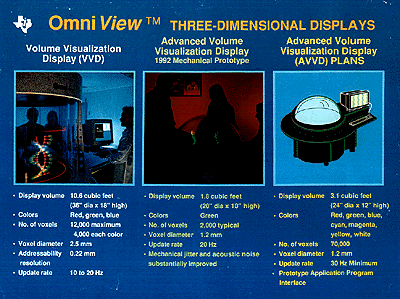University of Canterbury, New Zealand
From down under comes some substantial improvements by Drs. Blundell and Schwartz on Ketchpel's pioneering work using spinning phosphor screen with a cathode ray tube (CRT). Aspects of the system hold promise for lightweight, high performance volumetric imagers.

